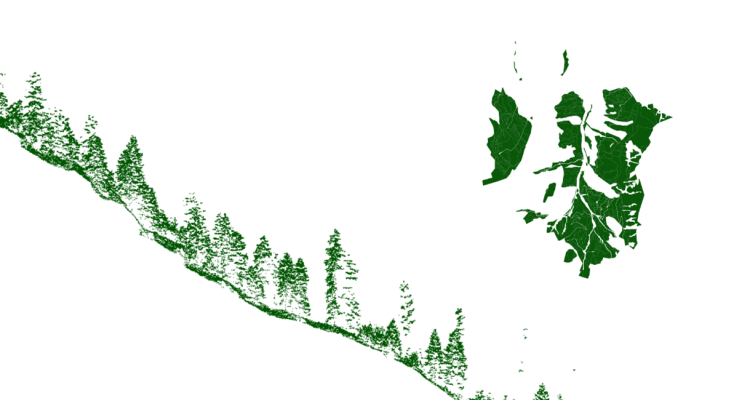
Colloquium
Automated classification of forest stands using Airborne- and Personal Laser Scanning data
By Max Albers
Abstract
Effective forest management planning relies on accurate segmentation and classification of forest structures into individual stands, typically achieved through a combination of field inventory plots and manual delineation supported by remote sensing data. This process, however, is both time-consuming and prone to human error. Over the past two decades, research has increasingly focused on automating stand classification using multispectral and Airborne Laser Scanning (ALS) data, with significant advancements. Nevertheless, ALS has limitations in penetrating upper canopies, which restricts its ability to capture critical understory vegetation metrics, such as light penetration and young tree regrowth potential. Although Personal Laser Scanning (PLS) can provide accurate understory data, its spatial extent is limited. To bridge these gaps, previous research has successfully attempted to extrapolate PLS-derived forest structure parameters using ALS data. However, no studies have yet incorporated these predicted understory vegetation metrics to enhance automated stand classification. This research addresses this gap by integrating ALS and PLS data to improve the accuracy of automated stand classification.
ALS and PLS data were collected across two study areas in Tyrol, Austria, and a range of forest structural parameters were derived from raw point clouds using open-source R packages. Through Random Forest (RF) regression, parameters such as canopy height metrics, point distribution across the vertical forest structure, and canopy openness (relative ground point density) emerged as strong predictors of understory forest structure. Subsequently, these understory parameters were extrapolated across the study area, achieving moderate to good predictive accuracy, especially for lower and upper understory vegetation densities (R² = 0.64 and 0.70, respectively).
Using manually delineated forest stand classification polygons, ALS and PLS-derived parameters were incorporated into RF classification, with similar metrics as in the prediction of PLS parameters found to be significant predictors of forest stand categories. Notably, PLS-derived parameters added predictive value, particularly for transitional zones between stand categories. However, validation through ground-truth data remains needed to fully assess the robustness of these predictions and validate the study’s hypothesis.
To evaluate the quality of the automated stand classification, it was compared with manual stand classifications (2024) across multiple metrics. Visual assessments indicate that automated methods were more effective at capturing small-scale heterogeneity, often overlooked or generalized in manual classifications. Additionally, automated stand classification combining ALS and PLS parameters resulted in more homogeneous stand classificaitons, reducing mean within-stand variation by 8% compared to manual methods. The same approach improved between-stand distinction, increasing mean between-stand variation by 20%. However, categories representing small areas in manual classifications were disproportionately large in automated classifications due to proportional sampling, leading to decreased homogeneity and distinguishability in these categories.
Finally, findings indicate that the developed automated classification cannot be used in areas with significant topographic and structural variation. Because of these variations, the RF classification algorithm suffers from substantial extrapolation errors.